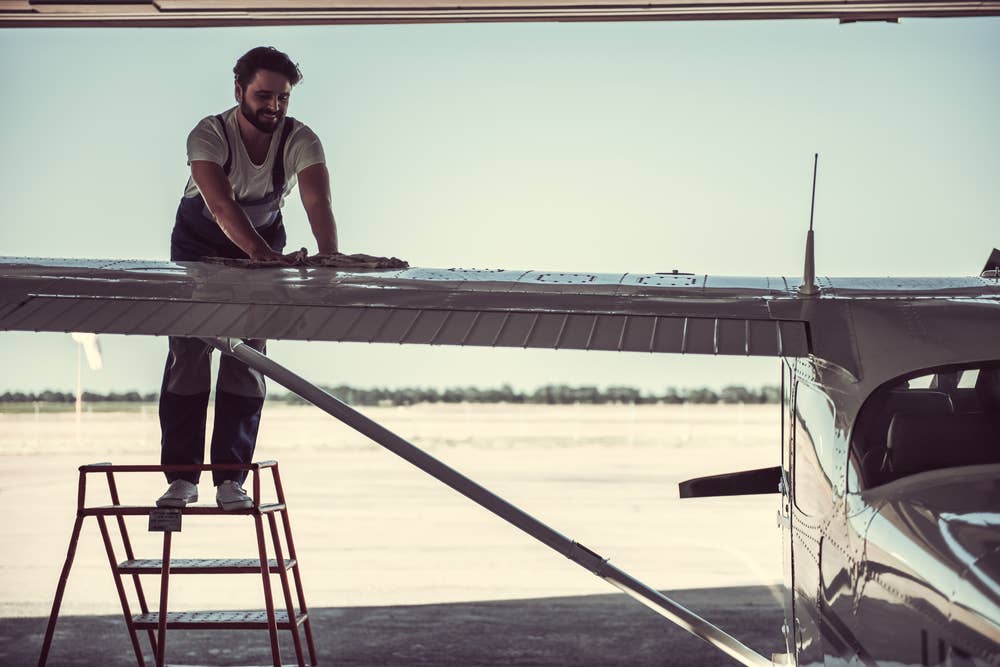Remember the Importance of Keeping Your Ideal Aircraft Clean
Smashed bugs and other bits of debris can mar an airplane’s appearance and aerodynamics.

Cleaning the bugs of your aircraft’s wings is an item for your personal checklist. [Credit: Shutterstock]
Recently I was scrubbing sooty exhaust residue and runway grime from the underside of Annie, our Commander 114B, when I realized I had drastically underestimated the time required for the job. Indeed, I had planned to clean the entire airplane that day, including the interior, but after a few hours of slow progress it became clear that this task would be measured in days.
I also knew that I had only myself to blame for waiting too long to address the dirty buildup. Had I taken the time to wipe down the airplane thoroughly after every flight I could have avoided the discomfort of lying underneath in a semi-stress position, rag in hand. I have a creeper that makes scooting across the hangar floor easier, but it cannot help me scrub.
My reason for tackling the cleaning project stems from a trip to the National Championship Air Races in Reno, Nevada, earlier this month. While there I spent a lot of time observing the crew of Miss Trinidad, a Russian Yak-3U Unlimited class racer. I noticed that they cleaned the airplane several times a day, not just after each flight but in between flights. Cleaning and polishing were part of the long checklist it used to make sure the Yak was always ready to fly.
Earlier I had shown a picture of Annie to the Yak’s crew chief, John Dowd, a career agricultural pilot and longtime racer I have written about before. Dowd pointed to the remains of hundreds of insects on the leading edge of the wing and reminded me that keeping the airplane clean would help aerodynamically in addition to simply being the right thing to do. He was correct, and, yes, the bugs really were visible in the photo. It was a bit shameful.
The Reno experience reminded me that owning an airplane is a major commitment, and cleaning off bugs, soot, and grass fragments is just a tiny part of the overall responsibility. After all, cleaning and checking every part of your aircraft helps ensure that you do not miss potential problems like airframe damage, corrosion, fluid leaks, or loose fasteners.
After returning from the air races, I began writing a personal checklist consisting mostly of tasks to complete at the conclusion of each flight and during nonflying time spent in the hangar. It is a living document. I add items to the list as they come to mind. You will not find them in the typical POH, but they are vital, and we tend to forget them without a checklist.
The efficient work of the volunteer crew taking care of Miss Trinidad also illustrated the importance of taking a consistent, professional approach to aviation. While I always seek to give my family a smooth, secure, airline-style experience when we travel in Annie, I know that I need to improve my briefing style and try not to be nervous when speaking with ATC. Becoming the best PIC one can be is always a work in progress.
For now at least one thing is certain: Annie will not have to overcome the drag of accumulated insects on our next flight.

Sign-up for newsletters & special offers!
Get the latest FLYING stories & special offers delivered directly to your inbox






